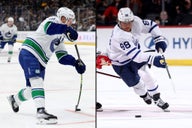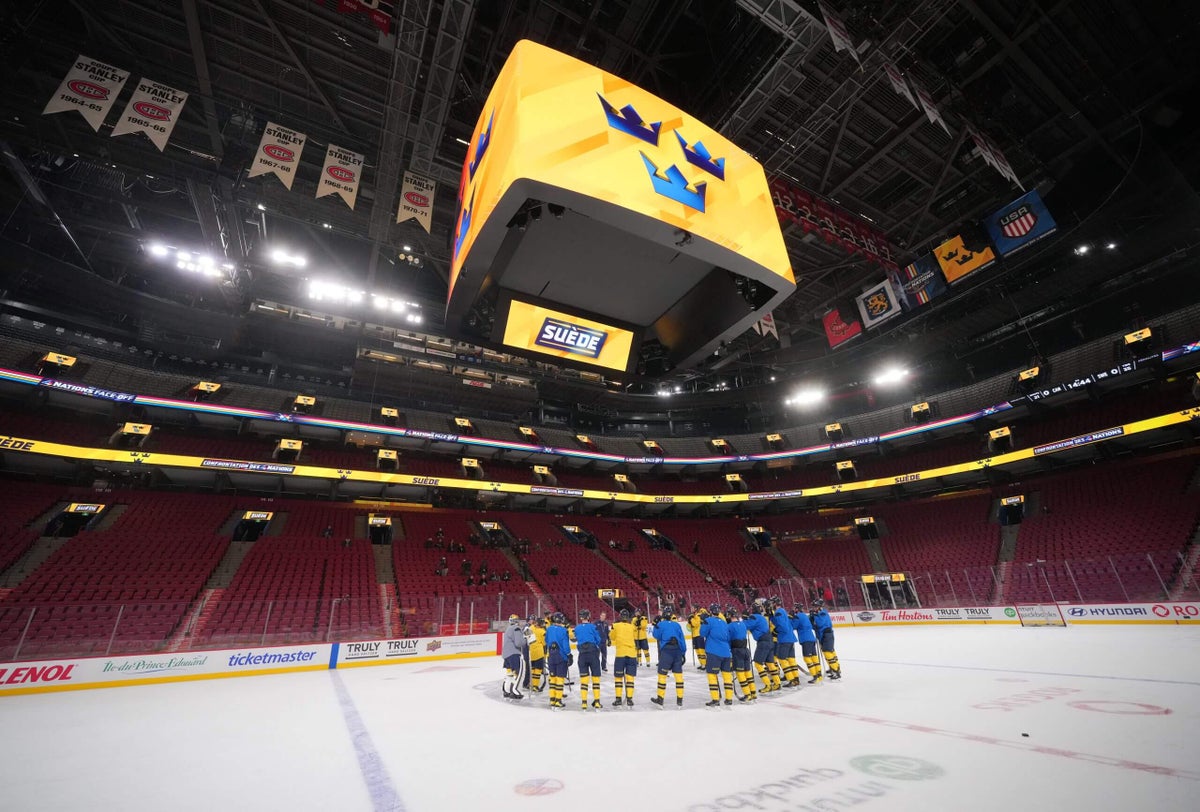MONTREAL — Imagine life as Connor McDavid growing up in the greater Toronto area, progressing under the following blueprint:
• Starting his under-6 adventure with a Toronto Maple Leafs minor hockey program.
• Playing junior for the Leafs.
• Pulling on the blue and white as an 18-year-old NHLer.
Fiction for McDavid was reality for Victor Hedman.
Hedman is from Örnsköldsvik. He started playing organized hockey when he was 5 years old. He played his first pro season when he was 17.
Hedman, the No. 2 pick in 2009, did all this while playing for one club: MoDo, the former team of fellow Örnsköldsvik natives Peter Forsberg, Markus Naslund, Henrik Sedin and Daniel Sedin.
In comparison, consider the path of Noah Hanifin, the No. 5 pick in 2015. The Team USA defenseman, who is from Norwood, Mass., started youth hockey with the South Shore Kings. He also played for Boston Advantage and Junior Valley Warriors, similar club teams as the Kings. In eighth, ninth and 10th grades, Hanifin played varsity hockey at St. Sebastian’s School. He went to the U.S. National Team Development Program in Ann Arbor, Mich. He arrived at Boston College as a 17-year-old freshman.
Hanifin played for six teams in the time Hedman played for one.
“When I grew up, I didn’t dream about the NHL. I dreamt about playing for MoDo,” Hedman says. “To go from age 5 to when I was 18 with the same organization was … yeah. People over here don’t really believe that. But that’s how it’s been back home.”
The teammates Hedman grew up playing with are friends for life. Others on Sweden’s 4 Nations roster had the same experience. Friendships cannot help but tighten when players progress through minor, junior and professional tiers without ever changing addresses.
“I’m not saying better or worse or right or wrong. Just culturally different,” Team Sweden coach Sam Hallam said of his federation’s approach. “Victor Hedman grew up playing for a youth team that also was the professional team in his town. I think he still sees himself as a MoDo player. I think you build a lot of passion and heart and soul for that.”
One club, one culture
The way it works in Sweden, most players join their hometown club. They are free to stay there throughout their minor hockey careers. Some progress to junior and pro hockey with the same club. Others move to bigger programs.
At early ages, Swedish players are not as familiar with structure as their North American counterparts. They are encouraged to learn the game through trial and error, sometimes against bigger and stronger players. Families are not required to purchase equipment for new players.
Take Elias Lindholm, for example. Lindholm was born in 1994 and raised in Boden, which does not have as many players as other towns. Lindholm regularly played up, with and against 1992- and 1993-born players. The Boston Bruins center had no choice but to think the game at a higher level against bigger, stronger and more experienced players.
“We played a lot of games growing up,” Lindholm says. “For me, that was a good thing. You develop well during games. Sometimes you play three, four games during the weekend.”
It was not uncommon for Lindholm to play 100 games per season. In his mind, it all blends together — actual games and informal fresh-air gatherings with his friends.
“Every time you had an opportunity to go outdoors, we had those times where there was no games — you just play with your buddies,” Lindholm says. “Nobody had a practice. You just go out there and have fun.”
Comfort is one reason the one-club model can promote steady development. Players become familiar with each other. There is little peer pressure, especially among parents, to chase greener grass elsewhere.
“You don’t have to leave your town,” said the Bruins’ Hampus Lindholm. “You travel a little bit when you get older. But it’s not like here where you have to be in travel teams. You have to switch a lot of teams. You don’t have to necessarily worry that much about switching teams and having new teammates all the time. You can be more comfortable being around the same guys. There’s both good and bad with that. But I learned the most when I was young.”
Sweden’s youth emphasis is on recreation. Skill, structure and development follow.
The way Mattias Ekholm remembers it, earning a living in hockey was never front of mind when he first stepped onto the ice for IFK Ore. Ekholm pulled on skates to play a game and enjoy the company of his friends. They were among the happiest times of Ekholm’s life, to say nothing of his career.
“Up until I was 15, it was all about having fun,” Ekholm recalls. “The biggest memories is you go on these weekend tournaments with your friends. You stay away, play games and hang out with your friends. Those are probably some of the better, if not the best, moments of the hockey part so far. The NHL is great. I’m not saying that. But the level of fun you had growing up and just playing, it’s a different kind of fun.”
Having a good time does not rule out hard work. When he was 16 years old, David Pastrnak decided to move from Czechia to play juniors for Södertälje. It was nothing like his Czech experience.
“The skill level as a kid and young players was pretty much the same. It was mostly everything off the ice,” Pastrnak recalls. “It was the work ethic. The way they were working out, preparing for the games, eating. Work ethic off the ice.”
The pressure of fragmentation
Ekholm has heard the stories of players bouncing between AAA clubs, schools, summer camps and showcase tournaments of North American minor hockey. He doesn’t like them. Ekholm believes stress at young ages can produce burnout.
“We have to focus more on having fun early on,” Ekholm says. “Maybe we’re doing all these camps, selections, select teams and all this stuff too early. For some, it works. But I think for the whole mass, it’s not to lose players but also fans at an early age. So if you have a bad experience, it’s like, ‘I’m not going to be a fan later on in life.’”
Sweden offers multiple divisions of competition within the same organization. There is not as much on the line in terms of chasing goals such as being drafted by a CHL team, making the U.S. NTDP or earning a college scholarship.
Former NHLer Fabian Brunnstrom, for example, played low-level Division 2 for Helsingborgs, his hometown club. He was a late bloomer. Brunnstrom progressed through Division 1 and the Elitserien. The undrafted Brunnstrom signed with the Dallas Stars in 2008 after widespread NHL interest.
“There’s so much pressure for a kid going to college and paying for school,” Hampus Lindholm says. “I feel like the pressure on you being successful, from the parents’ side of things, isn’t as big as over here.”
It is not easy for Sweden’s top players to transition to North American hockey. The ice is smaller. There is more pounding within the tightness of 85 feet. Life away from the rink is different. Family is an ocean away.
But the 23 Swedes participating in the 4 Nations Face-Off have found instant familiarity in Montreal. It is not just that they are speaking the same language on the ice. When a player like Hedman has played with the same friends for more than a dozen years, there is nowhere he’d rather be than at the rink.
“Everyone loved the game so much,” Elias Lindholm says. “Every opportunity you had to step on the ice, even if it was outdoors or wherever, everyone had fun doing it.”

GO DEEPER
‘I’d take his …’: Team Sweden players on one skill they’d steal from a 4 Nations teammate
(Photo: Andre Ringuette / Getty Images)
